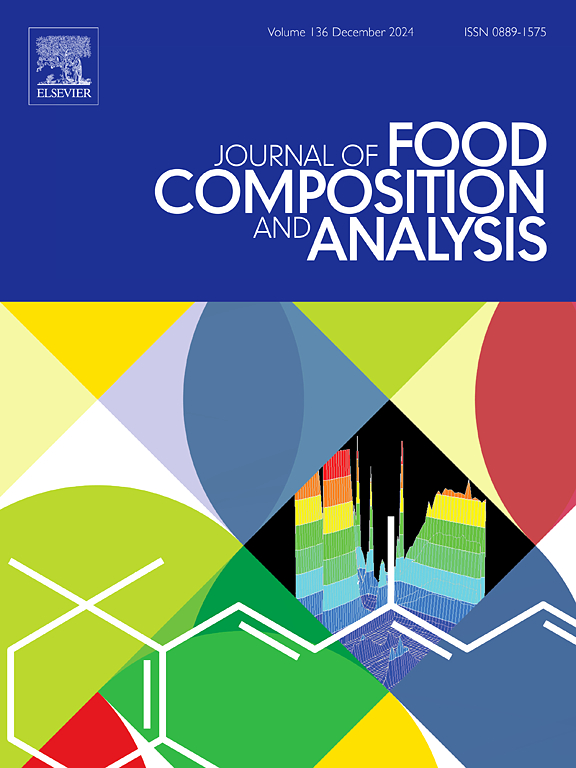Analysis of microorganisms of rotting rose hips by high-throughput sequencing and MALDI-TOF-MS
IF 4
2区 农林科学
Q2 CHEMISTRY, APPLIED
引用次数: 0
Abstract
Rose hips (Rosa rugosa), a rich source of bioactive compounds such as phenols, carotenoids, and vitamins, are increasingly recognized for their nutritional and medicinal value. However, the high nutrient content and moisture levels in fresh rose hips make them highly susceptible to microbial spoilage, which significantly reduces their shelf life and increases food waste. Despite the importance of understanding the microbial communities responsible for spoilage, limited research has focused on this aspect of rose hip preservation. This study aims to bridge this gap by investigating the microbial communities involved in the spoilage of four varieties of Rosa rugosa from Pingyin, Shandong Province, using high-throughput sequencing, MALDI-TOF-MS, and gas chromatography-mass spectrometry (GC-MS) for microbial and volatile organic compound analysis. High-throughput sequencing of 16S rRNA and ITS genes identified a diverse microbial community consisting of both bacteria and fungi, including spoilage-associated species such as Bacillus, Pantoea, Rahnella, Alternaria, and Aspergillus. MALDI-TOF-MS further confirmed these findings, revealing a broader range of microbial species. GC-MS analysis of volatile organic compounds (VOCs) identified key spoilage-related compounds, such as alcohols, ketones, and esters, with correlations between specific VOCs and microbial populations. This study provides valuable insights into the microbial dynamics of rose hip spoilage and offers potential markers for spoilage detection. The integration of high-throughput sequencing, MALDI-TOF-MS, and GC-MS sets a new benchmark for food preservation research, enhancing our ability to monitor and control microbial contamination in fresh fruits.
求助全文
约1分钟内获得全文
求助全文
来源期刊

Journal of Food Composition and Analysis
工程技术-食品科技
CiteScore
6.20
自引率
11.60%
发文量
601
审稿时长
53 days
期刊介绍:
The Journal of Food Composition and Analysis publishes manuscripts on scientific aspects of data on the chemical composition of human foods, with particular emphasis on actual data on composition of foods; analytical methods; studies on the manipulation, storage, distribution and use of food composition data; and studies on the statistics, use and distribution of such data and data systems. The Journal''s basis is nutrient composition, with increasing emphasis on bioactive non-nutrient and anti-nutrient components. Papers must provide sufficient description of the food samples, analytical methods, quality control procedures and statistical treatments of the data to permit the end users of the food composition data to evaluate the appropriateness of such data in their projects.
The Journal does not publish papers on: microbiological compounds; sensory quality; aromatics/volatiles in food and wine; essential oils; organoleptic characteristics of food; physical properties; or clinical papers and pharmacology-related papers.
 求助内容:
求助内容: 应助结果提醒方式:
应助结果提醒方式:


